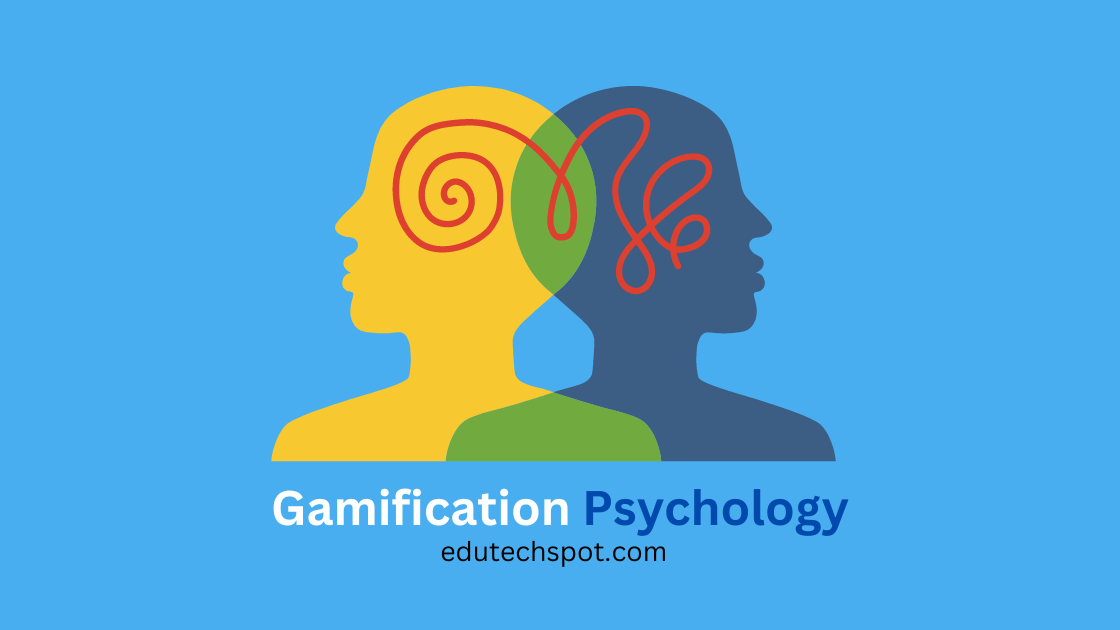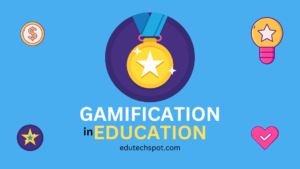Gamification is the integration of game-like elements into non-game contexts, such as marketing, education, and fitness. It’s a technique that has been widely adopted by businesses, marketers, and app developers alike, and for good reason. The psychology behind gamification is fascinating, as it taps into our natural desires for achievement, competition, and recognition. When we engage in gamified experiences, our brains release dopamine, a neurotransmitter associated with pleasure and reward. This creates a sense of satisfaction and motivation that keeps us coming back for more. In this article, we’ll explore the psychology behind gamification and why people love it so much. We’ll delve into the different game mechanics that are commonly used, and how they trigger our emotions and motivations. So, whether you’re a marketer looking to improve engagement with your audience, or just someone curious about the appeal of gamification, read on to discover the secrets behind this powerful tool.
The Neuroscience of Gamification – The Brain’s Response to Rewards
In this section, we’ll explore the neuroscience behind gamification and how the brain responds to rewards. As mentioned earlier, when we engage in a gamified experience, our brains release dopamine, a neurotransmitter associated with pleasure and reward. This creates a sense of satisfaction and motivation that keeps us coming back for more.
Dopamine is released when we experience something pleasurable, such as eating food, having sex, or listening to music. It’s also released when we achieve a goal or receive a reward, which is why gamification can be so effective. When we complete a task or achieve a milestone in a gamified experience, our brains release dopamine, which creates a sense of satisfaction and motivation.
In addition to dopamine, there are other neurotransmitters that are involved in the brain’s response to rewards. For example, serotonin is released when we feel pride, which can be triggered by achieving a goal or receiving recognition. Endorphins are also released when we experience pain or stress, which can be counteracted by engaging in a pleasurable activity, such as playing a game.
Overall, the neuroscience behind gamification is complex, but it’s clear that the brain’s response to rewards is a key factor in why gamification is so effective. By tapping into our natural desire for pleasure and reward, gamification creates a sense of satisfaction and motivation that keeps us engaged.
The Impact of Gamification on Behavior Change – Theories and Examples
In this section, we’ll explore the impact of gamification on behavior change. There are several theories that explain why gamification can be effective in changing behavior, such as self-determination theory and operant conditioning.
Self-determination theory suggests that people are more motivated when they have a sense of autonomy, competence, and relatedness. Gamification can provide all three of these elements by allowing individuals to choose their own path, providing a sense of progress and achievement, and fostering a sense of community through competition and recognition.
Operant conditioning, on the other hand, suggests that behavior is shaped by consequences. By providing rewards for desired behaviors, gamification can reinforce those behaviors and encourage individuals to continue engaging in them. For example, a fitness app that rewards users for completing daily workouts is more likely to encourage them to continue exercising than an app that doesn’t provide any rewards.
There are many examples of how gamification has been used to change behavior. For example, the app Duolingo uses gamification to encourage users to learn a new language by providing rewards for completing lessons and achieving milestones. Another example is the website Recyclebank, which rewards users for recycling by providing discounts and coupons to participating businesses.
Overall, the impact of gamification on behavior change is significant. By providing a sense of autonomy, competence, and relatedness, and by reinforcing desired behaviors through rewards, gamification can encourage individuals to make positive changes in their lives.
How Gamification Can Be Used in Education and Training
In this section, we’ll explore how gamification can be used in education and training. Gamification can be particularly effective in these contexts because it provides a fun and engaging way to learn new skills and concepts.
One way that gamification can be used in education is through the use of game-based learning. Game-based learning involves using games to teach specific skills or concepts. For example, a math teacher might use a game that involves solving math problems to help students learn basic arithmetic.
Another way that gamification can be used in education is through the use of badges and other forms of recognition. By providing badges for completing certain tasks or achieving certain milestones, teachers can motivate students to engage more deeply with the material.
Gamification can also be used in employee training. By creating gamified experiences that teach specific skills or concepts, employees are more likely to engage with the training and retain the information. This can be particularly effective for training on complex or technical topics.
Overall, gamification can be a powerful tool for education and training. By providing a fun and engaging way to learn new skills and concepts, gamification can increase motivation and retention.
Gamification in Marketing – Examples and Best Practices
In this section, we’ll explore gamification in marketing. Gamification can be a powerful tool for marketers because it provides a way to engage with customers and encourage them to take specific actions.
One example of gamification in marketing is the use of loyalty programs. Loyalty programs provide rewards for repeat customers, which encourages them to continue engaging with the brand. By providing rewards for specific actions, such as making a purchase or referring a friend, marketers can encourage customers to take the actions that are most beneficial for the brand.
Another example of gamification in marketing is the use of contests and sweepstakes. By creating a gamified experience that requires customers to take specific actions, such as sharing a post or submitting a photo, marketers can increase engagement and generate buzz around the brand.
There are several best practices for gamification in marketing. First, it’s important to align the gamified experience with the brand’s values and goals. Second, it’s important to provide rewards that are meaningful to the customer. Finally, it’s important to create a sense of urgency or scarcity to encourage customers to take action.
Overall, gamification can be a powerful tool for marketers. By creating fun and engaging experiences that encourage specific actions, marketers can increase engagement and generate buzz around their brand.
Criticisms of Gamification – Ethical Concerns and Limitations
In this section, we’ll explore some of the criticisms of gamification. While gamification can be a powerful tool for engagement and motivation, there are ethical concerns and limitations that need to be considered.
One ethical concern is the use of gamification for manipulation. By using game-like elements to influence behavior, there is a risk that individuals may be manipulated into taking actions that are not in their best interest. For example, a fitness app that rewards users for working out may encourage them to over-exercise, which can be harmful to their health.
Another ethical concern is the use of gamification for data collection. By collecting data on users’ behavior and preferences, companies can use this information to target them with personalized ads or other marketing tactics. This raises concerns about privacy and the ethics of using personal data for commercial purposes.
There are also limitations to gamification. For example, gamification may not be effective for all individuals or in all contexts. Some individuals may not be motivated by game-like elements, and some contexts may not lend themselves well to gamification.
Overall, while gamification can be a powerful tool for engagement and motivation, it’s important to consider the ethical concerns and limitations associated with its use.
Tools and Platforms for Gamification
In this section, we’ll explore some of the tools and platforms that are available for gamification. There are many different options available, depending on the specific needs of the user.
One popular tool for gamification is the platform Badgeville. Badgeville provides a suite of tools for creating gamified experiences, including leaderboards, badges, and rewards. It’s a powerful tool for marketers and businesses who want to create engaging experiences for their customers.
Another popular tool for gamification is the platform Kahoot. Kahoot is a game-based learning platform that allows teachers and educators to create quizzes and games for their students. It’s a fun and engaging way to teach new concepts and reinforce learning.
Other tools for gamification include game development platforms, such as Unity and Unreal Engine, and loyalty program platforms, such as Smile.io and LoyaltyLion. These tools provide a range of options for creating gamified experiences, depending on the specific needs of the user.
Overall, there are many different tools and platforms available for gamification. By choosing the right tool for their needs, users can create engaging and motivating experiences for their audience.
Gamification Case Studies – Successful Examples from Different Industries
In this section, we’ll explore some successful examples of gamification from different industries. These case studies provide insights into how gamification can be used effectively to engage and motivate audiences.
One successful example of gamification is the Nike+ Running app. The app provides users with rewards and badges for completing runs and achieving milestones. It also provides a personalized coaching experience that adapts to the user’s performance and goals. The app has been successful in motivating users to exercise more regularly and achieve their fitness goals.
Another successful example of gamification is the Duolingo language learning app. Duolingo uses game-like elements, such as leaderboards and rewards, to motivate users to learn a new language. The app has been successful in making language learning more accessible and engaging for a wider audience.
Finally, the website Foldit is a successful example of gamification in science. Foldit is a game that allows users to fold and manipulate protein structures in order to solve complex scientific problems. The game has been successful in engaging a wide audience in scientific research and has even led to breakthroughs in the field.
Overall, these case studies demonstrate the power of gamification in engaging and motivating audiences. By creating fun and engaging experiences that tap into natural desires for achievement, competition, and recognition, gamification can be a powerful tool for success in a variety of industries.
Conclusion – The Future of Gamification and Its Potential Impact on Society
In conclusion, gamification is a powerful tool for engagement and motivation. By tapping into our natural desires for achievement, competition, and recognition, gamification can create a sense of satisfaction and motivation that keeps us coming back for more.
While there are ethical concerns and limitations associated with the use of gamification, the potential impact on society is significant. Gamification can be used to change behavior, improve education and training, and create engaging marketing experiences. As technology continues to evolve, it’s likely that gamification will become an increasingly important tool for businesses and organizations in a wide range of industries.
Overall, the psychology behind gamification is fascinating, and its potential to impact society is significant. By creating fun and engaging experiences that tap into natural desires for achievement, competition, and recognition, gamification can be a powerful tool for engagement, motivation, and success.



